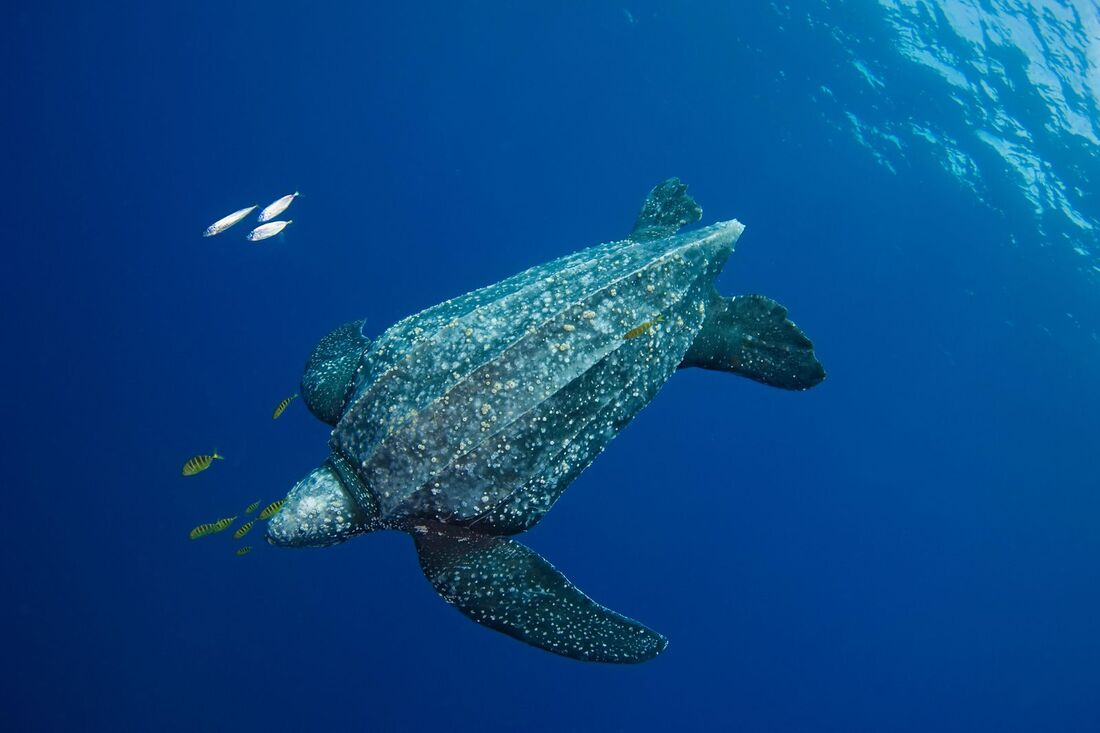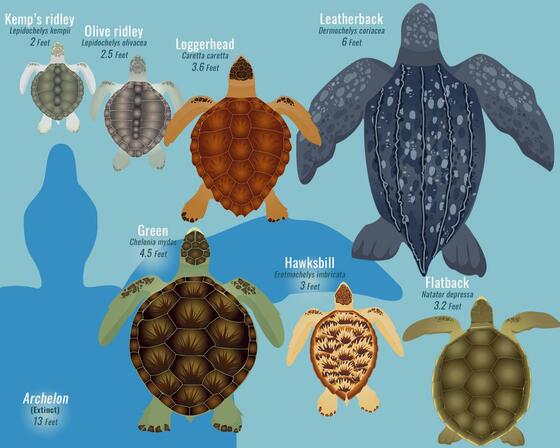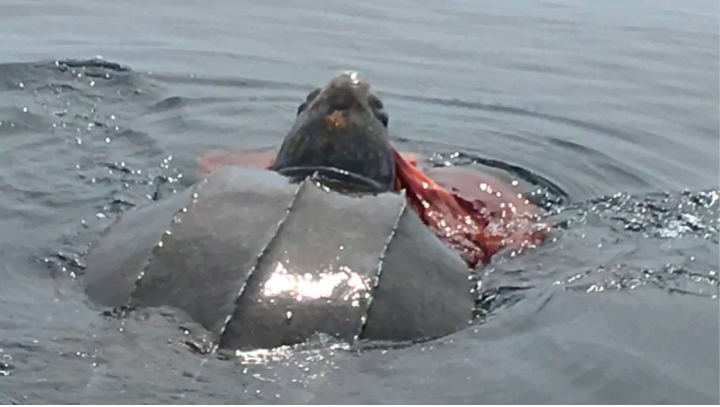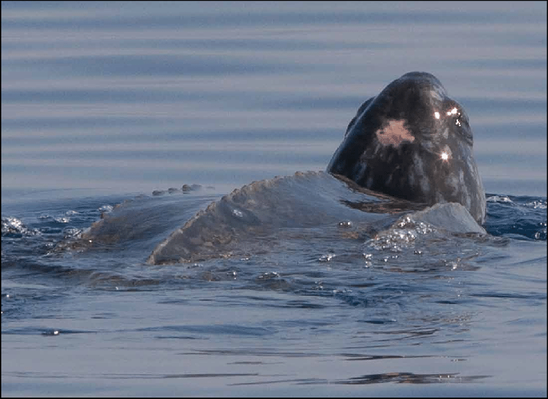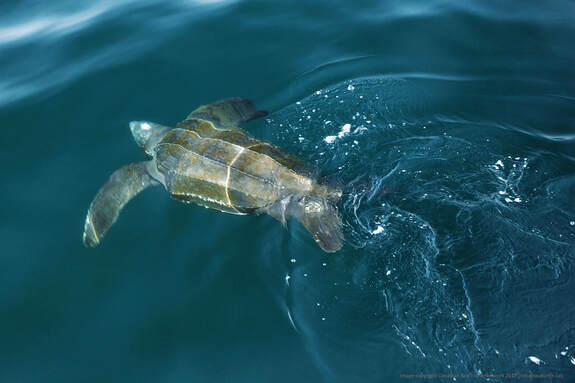|
June 16th is World Sea Turtle Day! To celebrate, let's talk about a sea turtle that’s a bit closer to home than you may have realized. Canadian Sea Turtles When you picture a sea turtle habitat, I bet you’re picturing a lush tropical beach with crystal clear turquoise water. That’s not incorrect! We can find many different sea turtle species in the tropics. However, there is one special species that likes to visit Nova Scotia’s waters on an annual basis. Welcome to the wonderful world of the leatherback sea turtle! The presence of leatherback sea turtles in Nova Scotia is a relatively new finding in the scientific world, although fishermen all across Atlantic Canada reported sightings of these turtles long before the first scientific article was published. Named after the thick skin that covers their shells, leatherback sea turtles visit Atlantic Canada and the North Atlantic ocean as part of their migration route. They can be spotted in Atlantic Canadian waters during the summer months, and then during the fall they begin their journey back down to the tropics to mate and nest. Leatherbacks are Super Cool Not only is it awesome that Canada has its own sea turtle species, but we actually have (in my opinion) the most fin-tastic sea turtle! Although there are many reasons as to why the leatherback is so incredible, I’m going to highlight three of my favourite reasons below. Their Size Size comparison of all seven currently living species of sea turtle, and one extinct species. Photo credit: Smithsonian Not many people realize just how big sea turtles are. Green sea turtles, which are a popular tropical sea turtle species and sometimes found in Atlantic Canada, are typically 3 to 4 feet long and weigh over 300 pounds. This is similar to the size of a baby elephant! However, Green sea turtles have nothing on leatherback turtles. Leatherback sea turtles are actually one of the largest reptiles on earth! They can reach over 2 meters (6 feet) in length and weigh over 2000 pounds. The only reptile to come close to the size of a leatherback sea turtles is the salt water crocodile! What They Eat Leatherback eating jellyfish in Atlantic Canada Photo credit: Lorne Bonnell from CBC news Leatherback turtles do not have a very diverse diet. In fact, they mainly only eat one thing. Based on how big they are, be you may think they eat huge fish or full lobsters – but the reality is a bit more strange! Leatherback sea turtles follow currents from the tropics all the way to Nova Scotia to find one thing: Jellyfish! You read that right, these massive turtles only eat jellyfish and other jellyfish-like animals like tunicates and ctenophores. A single jellyfish doesn’t provide very much nutritional value, so leatherback sea turtles will eat up to their body weight in jellyfish every day! Think about how many more jellyfish would fill our ocean if we didn’t have turtles eating 2000 pounds of jellyfish daily. Thank you leatherbacks! The Pink Spot Leatherback sea turtle with visible pink spot on the top of its head! Photo credit: S. Bonizzoni The last cool leatherback fact I’m going to highlight is their pink spots. Leatherbacks have a very special characteristic that helps us identify them from afar (it comes in handy when trying to spot a leatherback from a boat to tag!). On the back of every leatherbacks head is a pink dot. This is actually an exposed part of their brain! Although science is still debating what the actual function of this pink spot is it is theorized it helps identify light and may play a role in leatherback migration! Perhaps a built in GPS? Turtles in Danger Unfortunately, similar to other sea turtles species, leatherback sea turtles population numbers have declined, and the species is currently listed as vulnerable on the IUCN Red List. These turtles face many threats including fisheries bycatch, habitat loss, and plastic pollution. On the plus side, if you’re looking to help leatherbacks you have already have helped just by reading this far into my blog post! Not many people realize how cool leatherback sea turtles are and that they are part of our maritime family. The more people that realize these turtles share our waters and how amazing they are, the better chance the turtles will have for future protection measures. If you are interested in doing more for leatherback sea turtles check out the Canadian Sea Turtle Network who are doing great work for sea turtles in Canada. If you’re looking for even more leatherback content checkout this fact page by NOAA Fisheries. Feel free to ask questions about leatherbacks in the comments! 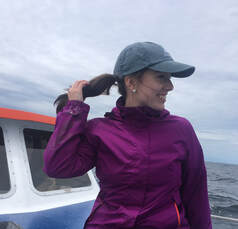 Lauren is a part of the Communications Committee for Back to the Sea and just recently finished her undergraduate degree in marine biology and sustainability at Dalhousie. Lauren is extremely passionate about ocean conservation and loves to share this passion by educating everyone around her on the wacky and amazing species that call the ocean home!
2 Comments
Shawna Basque
2/23/2022 04:43:34 am
Thank you Lauren for your valuable information and suggested further readings.
Reply
Back to the Sea Society
2/23/2022 10:48:37 am
Hi Shawna! Thanks for the comment! We've replied to you by email :)
Reply
Leave a Reply. |
Categories
All
We send blog recaps with in all our quarterly newsletters!
|
